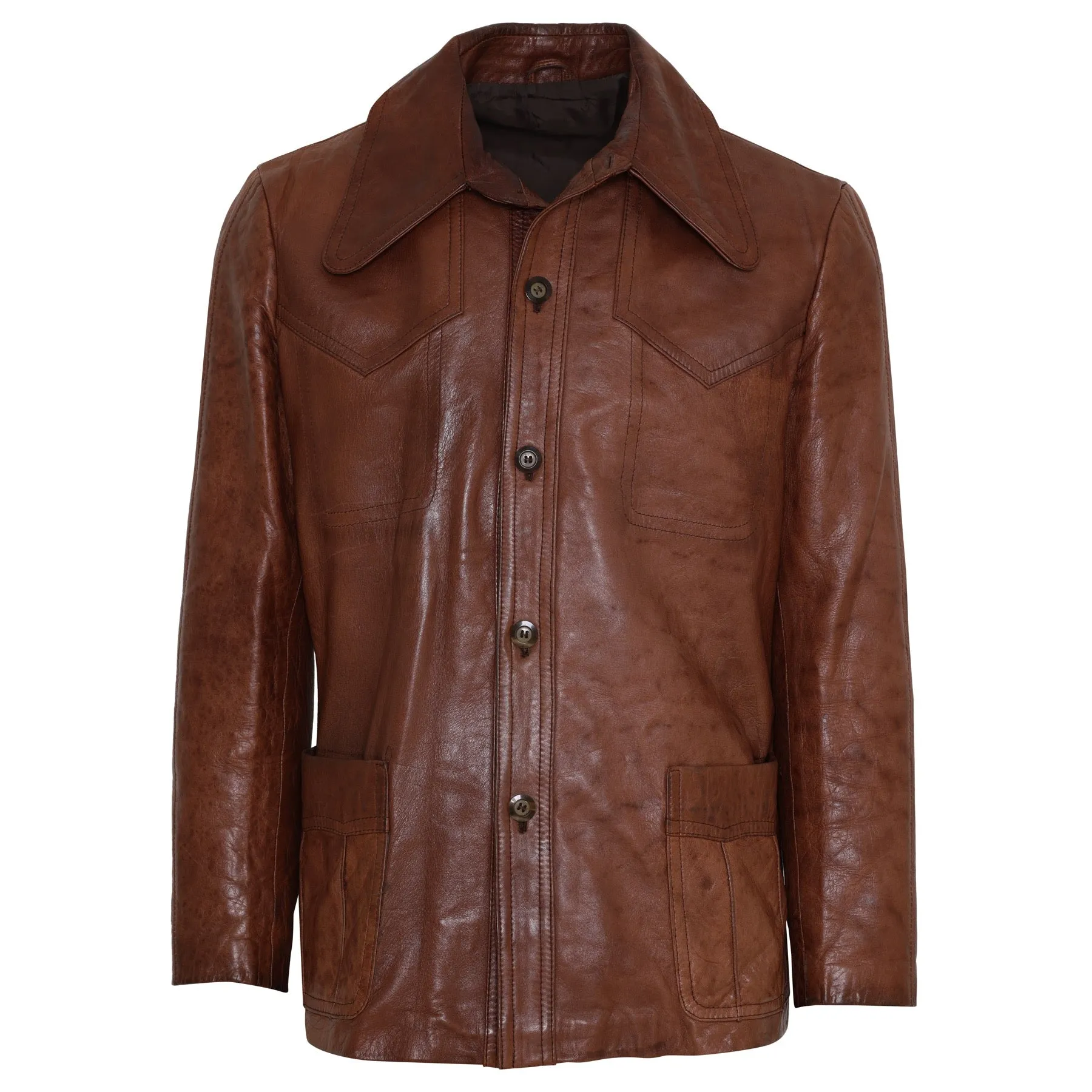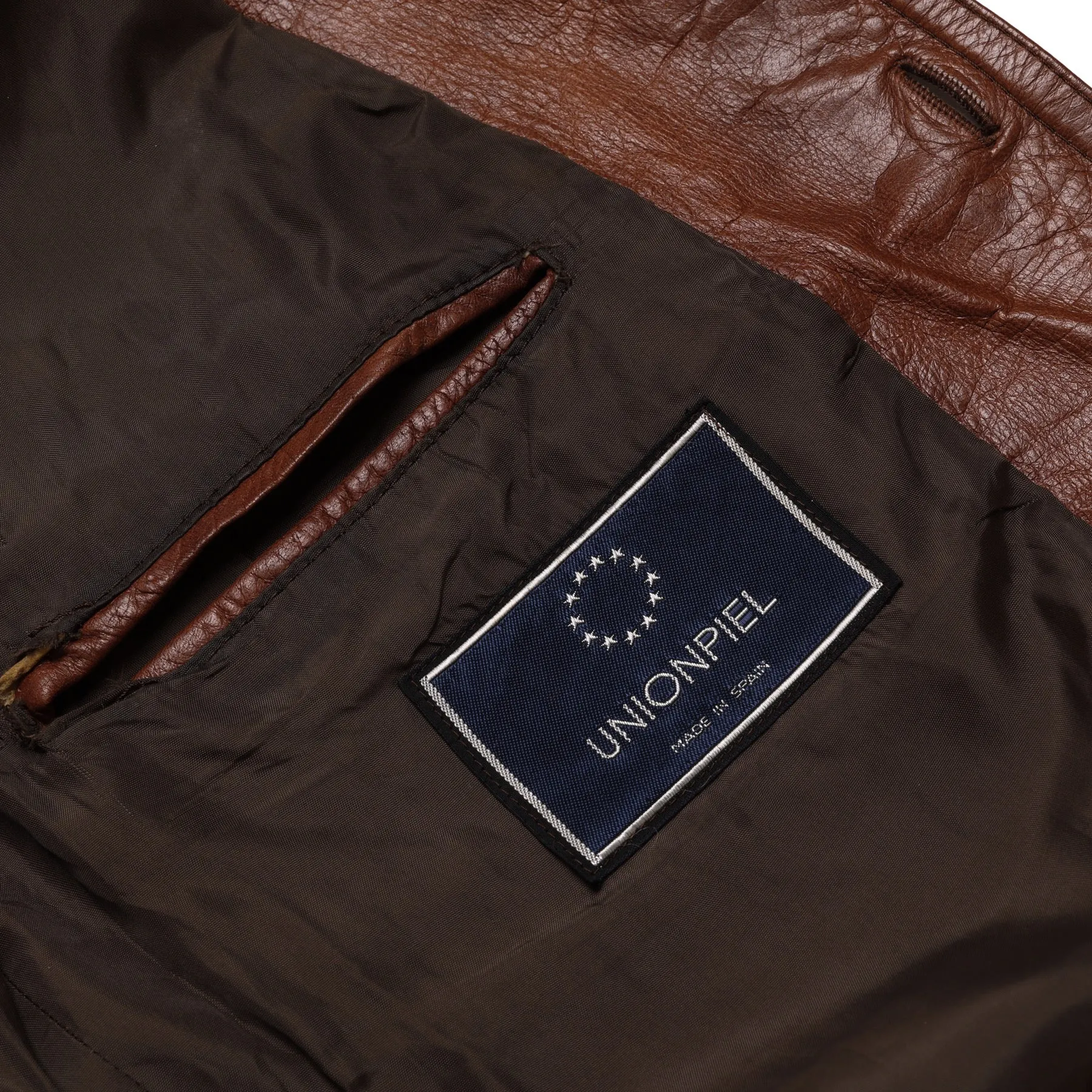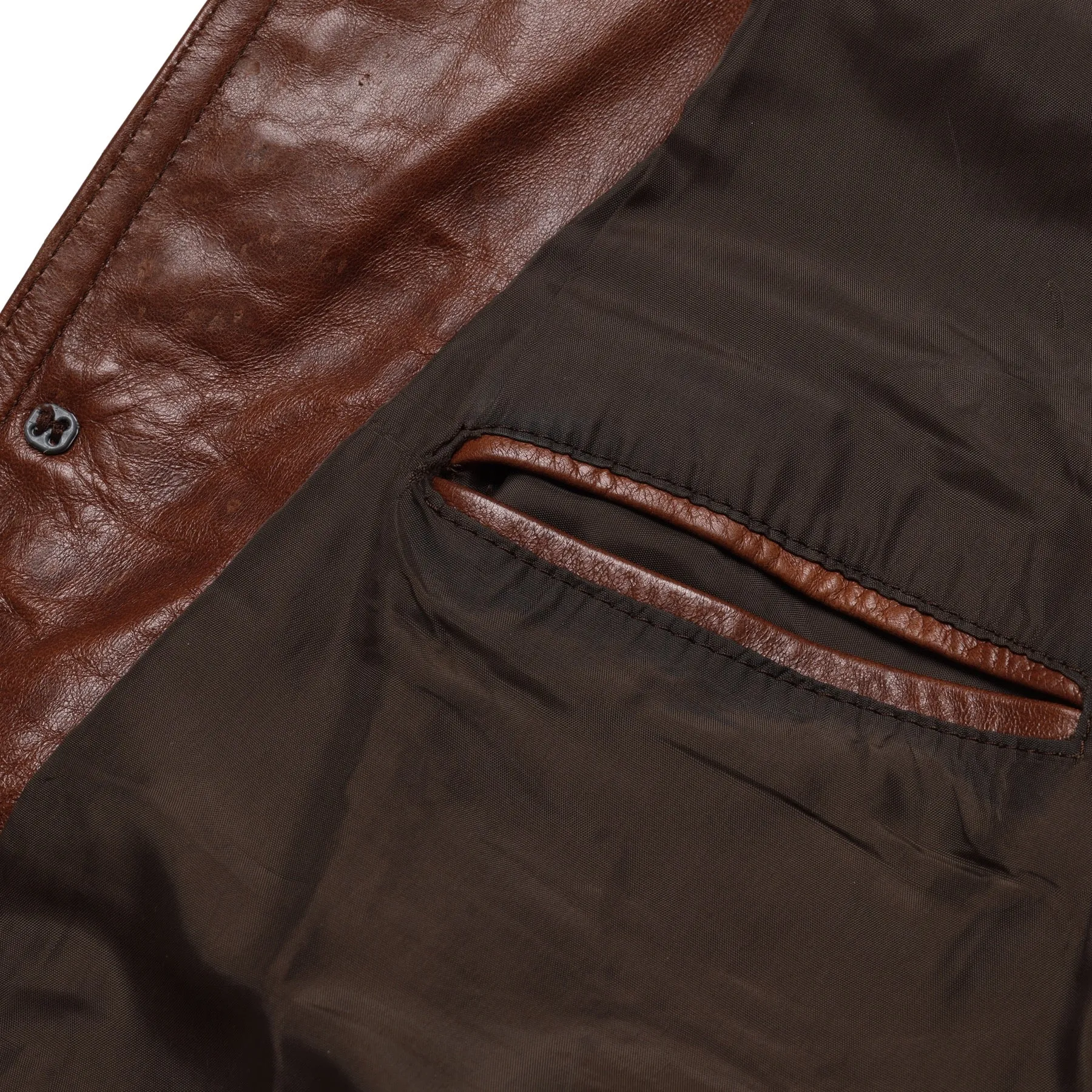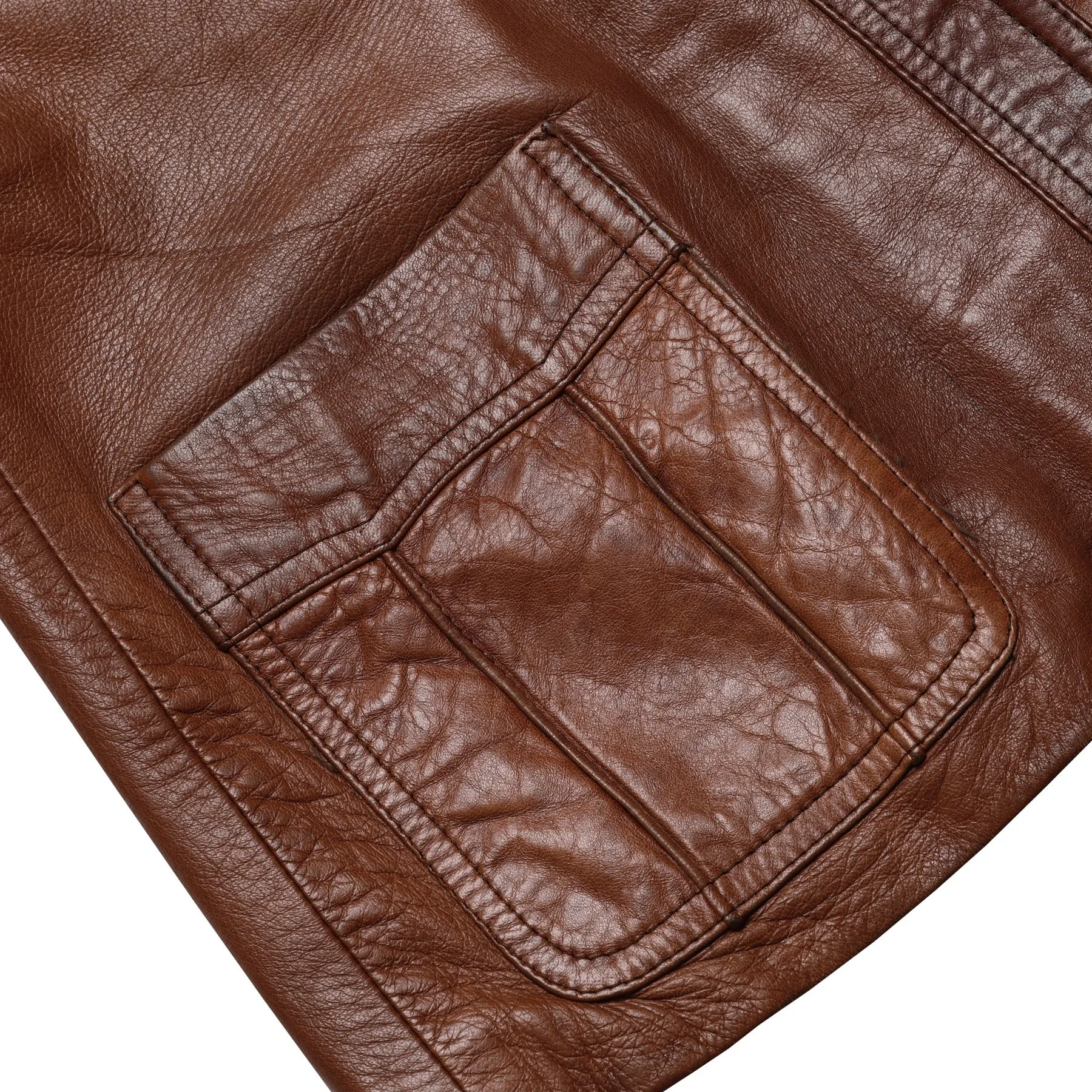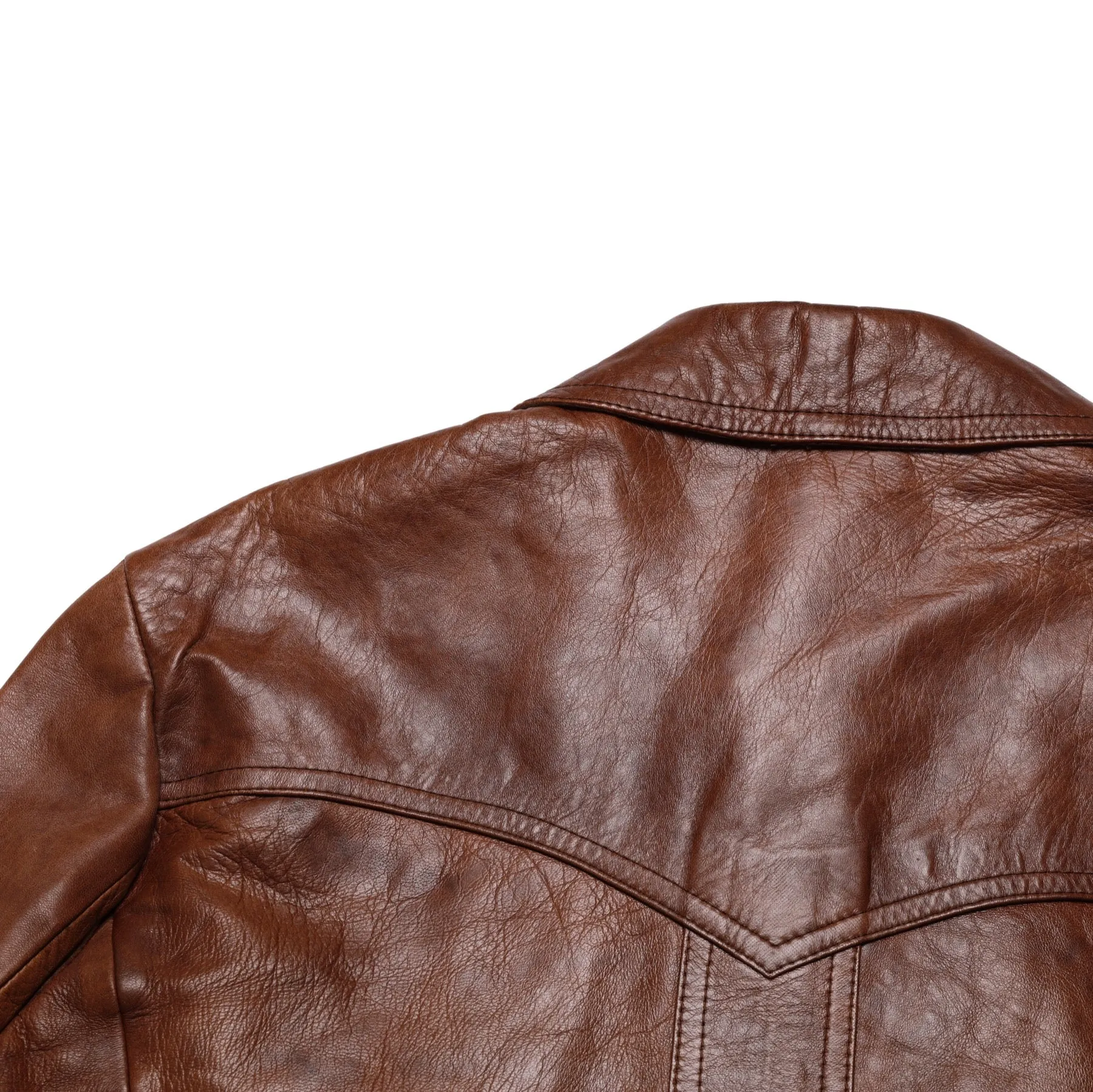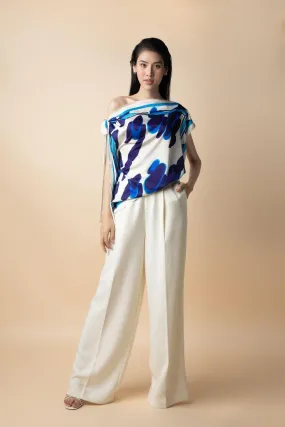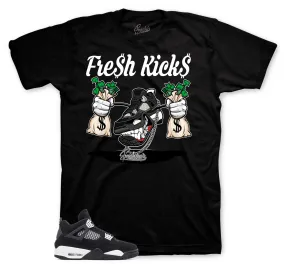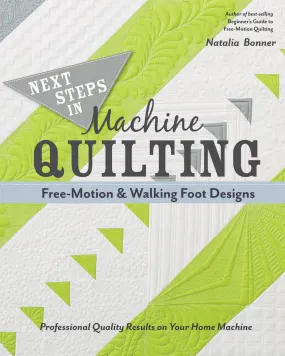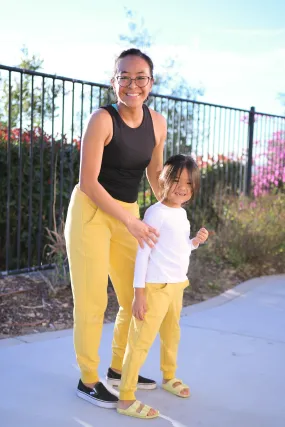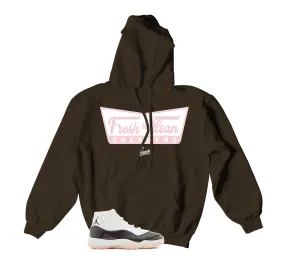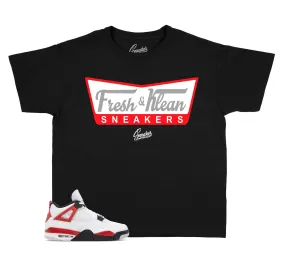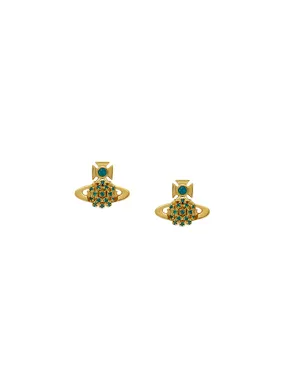Full-grain, semi-aniline cowhide construction balances natural grain visibility, abrasion resilience, and rich patina development over time.
The Unionpiel men’s mid-length leather field jacket, produced between approximately 1975 and 1982, represents a robust articulation of Spanish leatherworking heritage industrialized for an internationalized, postwar fashion landscape. Rooted in Spain’s centuries-old tradition of artisanal tanning and construction—particularly from regions like Ubrique and Catalonia—Unionpiel channeled that legacy into accessible, mid-to-upper mass-market outerwear, prioritizing material authenticity, structural longevity, and rural-urban versatility over seasonal trend volatility. This jacket, with its Western-influenced yoke design, modular fieldwear pocketing, and semi-aniline full-grain cowhide construction, stands as a meticulously crafted expression of functional, tactile modernism. Designed as a hybrid between a rural field coat and urban lifestyle outerwear, the jacket’s pattern architecture is defined by a sharp-pointed yoke across front and back shoulders, a wide spread collar with crisp topstitch reinforcement, and a boxy torso silhouette constructed from vertical panels to preserve mobility and ease of layering. The four-button front closure, twin chest welt pockets, and oversized lower patch-and-flap pockets situate the garment firmly within the 1970s–80s Western-European adaptation of American military and ranch-wear typologies—reinterpreted with higher-grade materials and restrained stylization. The absence of waist suppression or darting prioritizes structural clarity and garment longevity over body-contouring fashion imperatives. Technically, the jacket is assembled using flat-felled, double-stitched seams—a construction strategy ensuring tensile strength and surface stability, critical in medium-weight leathers measuring approximately 1.0–1.2 mm in thickness. Stitch length (~4–5mm) is optimized to prevent perforation fatigue while maintaining structural coherence. Seams are glue-set prior to sewing, standard for heavyweight hide handling, with secondary topstitching reinforcing areas of maximum stress: yoke junctions, armholes, center-back seams. Buttonholes are directly punched through leather layers, cleanly reinforced with perimeter stitching to prevent stretching or tearing under repeated mechanical stress. The outer leather is a full-grain, semi-aniline finished cowhide, minimally corrected to preserve natural grain variation, marbling, and micro-textural depth. Surface finish allows for light pigmentation while maintaining transparency to the organic skin structure beneath, ensuring a rich, gradual patina over time. Comparative material alignments can be drawn to heritage tanneries such as Conceria Il Ponte, Badalassi Carlo, Horween Leather Company, and Wickett & Craig, whose full-grain vegetable-tanned hides mirror the tactile richness and structural pliability present here. The lining is a durable poly-taffeta plainweave, facilitating low-friction garment interfacing without excess bulk or weight, stitched directly into facing seams with a practical bagging-out method common to industrial leather assembly. Pattern engineering optimizes leather economy without sacrificing ergonomic performance. Shoulder articulation is achieved via yoke structuring, chest tension is diffused through welt pocket reinforcement, and lower hip panels are curved slightly for side body conformity without exaggerating silhouette flare. Sleeves are single-seam constructions with slight underarm curvature, balancing durability with mobility. The wide collar is internally interfaced, edge-stitched for tension stability, and built to retain its sculptural spread despite the leather’s inherent mass and drape. Edge finishing is technically disciplined: turned and topstitched throughout, particularly critical at hems, cuffs, and collar breaks where leather flex points are most vulnerable to long-term deterioration. Interior finishing is pragmatic rather than ornamental—welt pockets exhibit functional but slightly irregular installation over thick transitions, emphasizing structural performance over visual refinement. Conceptually, the jacket embodies a tactile synthesis of rural romanticism and modern urban functionality. Its leather surface conveys primal resilience, while its pattern logic and restrained detailing project a composed, stoic masculinity. Psychologically, the piece negotiates tradition and aspiration, rooting the wearer in tactile authenticity while signaling competent adaptability to transitional environments—a nuanced balance between rugged heritage and modern lifestyle demands. Artistically, the jacket adheres to a functional-realist aesthetic: emphasizing modular grid seam logic, material honesty, and durability-centric beauty over expressive or decorative excess. It operates within a Bauhausian material philosophy, privileging the intrinsic character of its components while maintaining formal restraint—an approach that continues to inform luxury minimalism and utilitarian revivalism in contemporary fashion. Historically, the jacket’s emergence parallels Spain’s gradual liberalization post-Franco and its integration into broader Western cultural and economic systems. Leatherwear of this caliber from Unionpiel and peer brands helped internationalize Spanish craft traditions, offering rugged but sophisticated alternatives to Anglo-American fieldwear, especially as leather jackets transitioned from specialist gear into staple urban outerwear. Today, such a jacket holds potent relevance within the vintage-luxury continuum. Fieldwear-rooted leather garments, particularly those showcasing authentic aging potential and uncompromised material selection, have re-emerged as critical templates for sustainable fashion, luxury casualwear, and heritage-driven capsule wardrobes. Modern analogs in the work of Brunello Cucinelli, Barena Venezia, and Valstar attest to the enduring resonance of this stylistic formula. Collectors, stylists, and designers seeking authentic material narratives and cross-disciplinary relevance between function and form would find exceptional value in this Unionpiel jacket. Ultimately, this piece stands as a masterful convergence of tactile resilience, honest construction, and timeless, purpose-driven design. It embodies the highest virtues of industrial leatherwear production from 1970s Spain—offering a garment that transcends its mid-market origins through enduring structural excellence, material literacy, and conceptual integrity. In both archival and contemporary contexts, it remains a blueprint for durable sophistication and understated masculine elegance.
Measurements (cm):
Chest: 56
Length: 70
Shoulder: 47
Sleeve: 62
Size Conversion (approximate)
US Men’s Size: L
EU Men’s Size: 50
SKU: 015039




